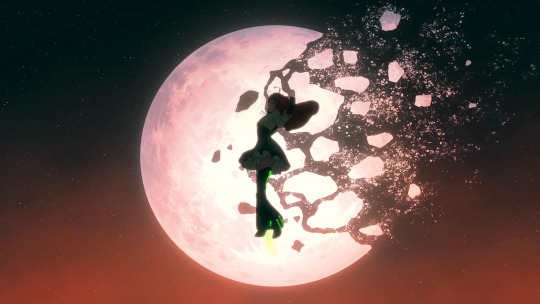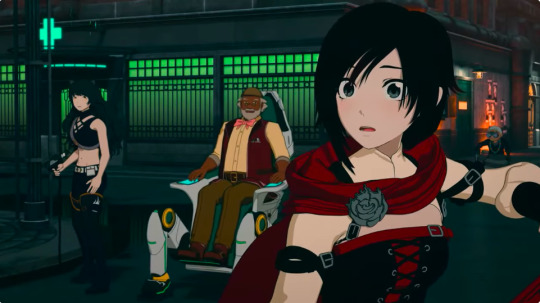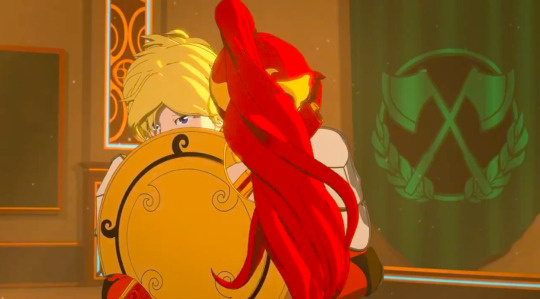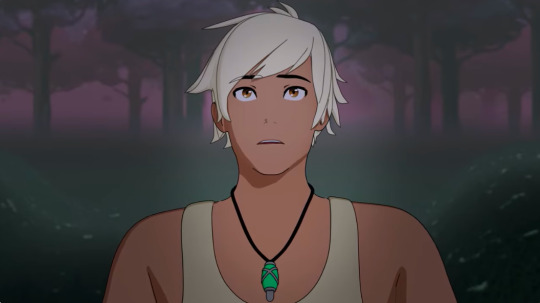#illusion speaks
Explore tagged Tumblr posts
Text
Psst, hey. I'm about to go sleepy, but I have a weirdly specific question.
Does anyone know of any fight scenes (movie, show, animation, any genre really), where 2 characters are fighting over an object? Like maybe one character has something really important and the other is trying to grab it from them.
Really random and specific, I know, but I'm writing a thing, and I need some inspo >:)
#thank you if you do#ive never written anything like this before#but im having fun#im working on my storyboard portfolio#illusion speaks
12 notes
·
View notes
Text

jon needs a door and i need a fucking break from this weather uhhh
music from the..floor?? ♪┏(・o・)┛♪
#tma distortion#tma michael#tma podcast#the magnus archives#jonmichael#jondistortion#michael distortion#michael shelley#tma#tma fanart#i couldnt find full version of this song anywhere but its like#suits the occasion so to speak ksljdfkjsd#on my second run of rereading jonmichael fics#yesterday i was just sitting on the floor reading screenshots that ive made#of the fave moments from the fics...........................#thats where im mentally rn#phphph#optical illusion
13K notes
·
View notes
Text

Maybe we never had a chance.
[First] Prev <–-> Next
#poorly drawn mdzs#mdzs#wei wuxian#lan wangji#a-yuan#Ultimately...despite how hard we try to reach people - sometimes it just is not possible.#Sometimes all you can do is wish that things could have been different. You pen a note with all the things you want to say -#and then you let it go. The words stay unsent and unspoken. You just watch the rift between you grow until you're too far away to try again#It is a sad end! It is two people who want to be closer but do not have the right capacity to do anything but shut doors.#Worse yet; it's two people who feel it is not their place to try and impose anything more.#It takes so long to heal from endings like that. You never get enough closure when there is still a faint hope of 'another day'.#It's a false amicability. It's closing a door and telling yourself that at least the windows are unlocked.#WWX will keep up his friendliness as a way to hold LWJ at a distance. LWJ can only try to help so many times.#Speaking of tragedies of trying to help; Let's talk about the addiction metaphors in this episode.#WWX tells LWJ in fairly straightforward terms that he does not *want* do be doing ghost cultivation.#What he wants is to protect people - by any means necessary. If he had another option he would take it.#The path WWX 'chose' is one that is deeply mired in external shame and taboo. He jokes about it but it clearly doesn't feel great.#And I put 'chose' in quotes because just like many who find them selves in bad situations - the choice is an illusion.#He's adamant that this is 'his' choice. That he is in control.#Better to be villainized that endure the terrifying reality that you lack any ability to have choice anymore.#If he had the choice - truly had the choice - he would not be doing this.#You can't help those who don't want to be helped. So of course all LWJ can do is watch from the side. Offer a hand when he can.#This life was a tragedy and the countdown to it all blowing up started a long time ago...
1K notes
·
View notes
Text

Lab tech brain compels me to ramble through my OC
#fallout#arcade gannon#my art#you fools- by liking my previous art post you compelled me to do more art#anyhow I suppose that the one upside to wasteland medicine having less people involved is that there's less room for miscommunication#this is one thing on a canvas with far too many things#and the one other finished thing can sit in my drafts to post later for the illusion of me doing more art than I have haha#woe be upon y'all I can only post non-OC art when it's with an OC present it's just the law of my brain#it's a significant motivating factor I cannot sidestep around#anyway if you read these tags know that his speaking cadence is 1000 miles an hour#one of them say nothing OR flip a switch then be a chronic yapper kinds (like myself)
2K notes
·
View notes
Text






First || Prev || Next
That damn bell
#distorted illusions#dream smp#dream smp fanart#c!tommy#c!wilbur#c!tubbo#comics#rozoodles#y’all have no faith in Tommy smh /lh#well actually I shouldn’t speak so soon
335 notes
·
View notes
Text

am i right or am i right
#actually they’re all the same.#the spectrum is an illusion#simply speaks#bg3#raphael bg3#baldurs gate 3#astarion ancunin#astarion#bg3 astarion#barbie preminger
2K notes
·
View notes
Text
I have an au/headcannon that the lantern corps all have a language that only they can understand, it’s a weird mix of a bunch of alien languages and stuff-
Anyway I could ramble about this for a long time but I made this post with the purpose of saying how funny it would be if a GL(let’s say Hal Jordan) was kidnapped and given truth serum but instead of giving all his information away he just-

Any everyone (including the JL who were busting in to save him) looks at him like

Anyway that’s my random thought that I spent way to much time drawing :)
Edit: I realize that this could be even funnier if you take into account that the lantern language sounds a bit musical-ish to Earthens… (they watched GL get doused in truth pollen or something then sing gibberish-)
Another edit: Link to a post more about this au if anyone cares (it’s under the Lantern Corps Language Au tag anyway though)
#Green Lantern#Lantern Corp#Lantern Corps#GL#Hal Jordan#dc#dc stands for disregard canon#canon is an illusion#I know their rings all translate so they don’t need to have a corps-wide language but hear me out#I can do what I want#Wonderwoman#in confused because part of what he says has hints of ancient earth languages#Superman is confused because like three of the words sounded suspiciously similar to kryponian#Superman#John Stewart#is just annoyed that they are gonna get interrogated on this later#Batman#doesnt recognize the language but can tel it has parts of at least twenty languages that he does know#Plasticman#is just there#Flash#Has never heard him speak an alien language#And it also has sounds that humans shouldn’t be able to pronounce in it so all of them are confused by that#Captain Marvel#Shazam#Is confused because he is supposed to know every language but only understood part of what Hal said#What hal is saying does actually have a meaning and if anyone wants to know what it is I’ll translate but idk if anyone cares#The Lantern language is supposed to have colors used to indicate what they are saying as well but I haven’t figured it out yet#Lantern Corps Language Au#My post
260 notes
·
View notes
Text






is it really you standing there, or am i dreaming once more?
#rwby#nuts and dolts#arkos#ozlem#anywayy any rwby epic fans up in hereeee#in a perfect world this would be an absolutely vile edit but i have never edited before lmaooo#FG!!! PULL SOME ILLUSION FUCKERY LIKE ARKOS SO I CAN ADD YOU TO THIS POST AND MY LIFE IS YOURSSS#the rest of the song is. so bees coded. soooo maybe stay tuned for smthn to do with that#crafty speaks
148 notes
·
View notes
Note
If you acquire an Andalite, do you get their thought-speak voice or do you keep your own? (Or do you have both and get two?)
To the polls!
102 notes
·
View notes
Text

#shitpost#ena#ena dream bbq#ena joel g#instead of brain there is ena#yayyyy new hyperfixation#every ten seconds my brain resets and spits out something ena says and i have to physically restrain myself from saying it out loud#bless you for your business !#cheese and rice moony !#oh nonononono no no ! nono no !#i perceive illusions within delusions !#that's infaccurate !#may i offer you a divestment opportunity ?#i don like this pawty :(#gEEz louISE !!#very very much much iimperch#speak to me through the body language of the gOds !!!#I CAAN'T GO AWNNNN !! I WONT ACHEIVE ANYTHINGG ! SOMEONE PWEASE END MY SUFFEWINNGG !!!#turron !!
132 notes
·
View notes
Text

Haha she a Border Connie.
Even before Cat Steven (the cat) I imagined a cat Steven to be a calico with a stubby tail.
#The curly hair on top of his head is so goofy looking#But I acknowledge this cat doesn't look like Steven so that curly floof needed to be added.#Speaking of cat looks. it's interesting to note that based on 'Cat Fingers'. Steven seem to be able to shapeshift into colors that#isn't naturally his.#So like I headcanon that is so. So I had drawn him shapeshifting into Connie in almost accurate Connie colors.#Oh Steven would definitely be a golden retriever if he is a dog.#He has the enthusiasm of a golden retriever and the tenderness of a cat.#connverse#Steven Quartz Universe#Connie Maheswaran#Today was such a bad time I spent 10hours on a background and I'm ending my day still unfinished. ;u; So I drew connverse doggo snd car so#at least I'm going to sleep with the illusion that I've accomplished something#my shiz#skedoobles#SU#cat!Steven#dog!Connie#steven universe
276 notes
·
View notes
Text
look into my Saturday night plans as a young twenty-something with the whole world ahead of her

40 notes
·
View notes
Text

wheee
#star's shinies#mostly just messing with light no further commentary#I thought I did but I couldn't find the panel I wanted to reference#I may have misremembered it or had a different translation sooo#yeah no random meta today#Actually#why does viper consider Oroborous to be their strongest illusion when mirage R is so overpowered#idk maybe I missed something but I think it more speaks to their perception of power and control#they have that whole illusions vs martial arts thing going on with fon but the illusions they claim are their most powerful... are the ones#that are real? not the ones that affect the mind so strongly#I think part of that is that they have clearly had to prove themselves a lot *to* people who don't value that power#which has led to that duality of the pride and arrogance they present with their seemingly low actual opinion of themself and their talents#also#fon and mammon have many neat parallels I think#they may have been designed to be similar in that way even? opposing colours (light vs dark) but still that flowy shape language#but primarily in their flames#disintegration and construction exist in opposition to each other while also relying on the same? axis? maybe? idk#+ you get that kind of personality conflict where the one with the destructive powers is calm and controlled while the one with the creativ#powers is unstable and almost fragile#which in some ways makes their powers uniquely dangerous in their hands specifically- there are many destructive and angry storm users#in khr but that power in the hands of someone who will think before using it is much more worrying#and unstable mist users are shown again and again to be especially dangerous because someone who can bend reality losing their grip on#reality is a recipe for disaster#and to think I said I had no meta today#khr#katekyo hitman reborn#viper khr#mammon khr#fon khr#not in the art but I rambled about him in the tags enough that I think I need to tag him
48 notes
·
View notes
Text

A teeny theoretical sketch I drew on a plane of Juno being scolded(?) by one of his superiors. The phrase in mind was "knowing your place".
That place being several feet underground in a snug little box (I know it's not little hush).
#the flight attendant passed by as I sketched away and she said it was pretty (literally 'oh c'est jolie :D')#thank you he's an evil man built specifically to kill people#anywho I was away/survivng in europe for a few weeks hence my lack of a presence here#I thought it'd do me and my phone's mobile data some good to take a break from posting stuff at the time#so hello again I have returned#anywho as to whoever juno is speaking to#I left that open to interpretation#everyone we know by name and face currently is above him anyway so you have a lot of options#I also don't really know what he did or said but I kinda like drawing him with that meek little shrug sometimes#which is hard to do since he can't exactly lift up his shoulder joints#so the illusion is done by the tilt of his head and foreward rotation of the shoulders (ta-da?)#doodle-daas#megaman legends#rockman dash#megaman juno#rockman juno#I doodled a bit more (of this man) during my trip but Boy#it's hard to draw on a plane and a bus and in the dark#I wouldn't advise it but I didn't want to be on my phone all day (I needed the batteries to catch pokes and pikmans)
26 notes
·
View notes
Text
The Quiet Unraveling: Navigating Complacency, Consumerism, and the Search for Meaning in a Fractured World
Let’s begin with a confession: None of us are innocent here. We’re all tangled in the same messy web of contradictions—yearning for purpose while numbing ourselves with distractions, craving justice while clinging to comfort. This isn’t a condemnation; it’s an invitation to untangle the knots together. Because the truth is, the systems that suffocate us didn’t emerge in a vacuum. They grew from our collective fears, our exhaustion, and the very human desire to just make it through the day.

1. Complacency and Conformity: The Seduction of Safety
To understand complacency, we must first confront its seductive logic: Safety is not the absence of danger, but the illusion of control. We cling to routines, traditions, and systems not because we’re naive, but because the alternative—confronting the fragility of it all—feels paralyzing. Consider the factory worker clocking in for decades at a job that erodes their body, the student drowning in debt while chasing a degree they’re told will “guarantee stability,” or the parent who swallows their political disillusionment to avoid rocking the boat for their children. These aren’t failures of character; they’re rational responses to a world that punishes deviation.
Conformity is rarely about laziness—it’s about risk assessment. When the 2008 financial crisis wiped out pensions and homes, people didn’t suddenly rise up; they doubled down on “safe” choices. Why? Because rebellion is a luxury when you’re one missed paycheck from ruin. The gig economy epitomizes this: Workers accept exploitative conditions not because they lack ambition, but because algorithms dangle the carrot of “flexibility” while eroding labor rights. The message is clear: Play by the rules, or lose everything.
Even our language betrays this conditioning. We call nonconformists “idealists” or “radicals,” terms dripping with paternalism. Meanwhile, those who uphold the status quo are “practical” or “responsible.” This framing isn’t accidental—it’s cultural gaslighting. By equating compliance with maturity, systems ensure we police ourselves.
But safety is a mirage. For every person who “succeeds” by societal metrics, there are countless others crushed by the weight of unspoken compromises. Take the corporate ladder: Climbing it often demands silencing ethics (“Don’t ask about the offshore labor”), sacrificing health (“Sleep is for the weak”), and numbing creativity (“Follow the template”). We call this “success,” but it’s a pyrrhic victory—a life half-lived in exchange for a gold watch and a retirement plaque.
The toll isn’t just personal; it’s collective. Conformity sustains systems that harm us all. For example:
Environmental Collapse: We recycle dutifully while corporations lobby against climate policies, knowing our individual efforts are drops in an ocean of industrial waste.
Healthcare Inequity: Millions accept inadequate insurance plans because “that’s just how it is,” while pharmaceutical giants price-gouge life-saving medications.
Political Apathy: Voters settle for the “lesser evil” cycle after cycle, not because they’re apathetic, but because they’ve been conditioned to believe real change is impossible.
These aren’t signs of moral failure—they’re evidence of a rigged game. Systems thrive when we internalize their limitations as inevitabilities.
Breaking free doesn’t require grand gestures. It starts with questioning the stories we’ve been sold:
The Myth of Meritocracy: We’re told talent and grit guarantee success, yet study after study reveals wealth and connections matter most. Acknowledge this, and suddenly “laziness” looks more like exhaustion from running a race with no finish line.
The Cult of Busyness: Productivity culture equates self-worth with output. But what if we measured value in rest, creativity, or community care instead?
The Fear of “Otherness”: Conformity often masks a deeper fear—of being ostracized, of losing belonging. Yet some of history’s greatest shifts began with people who dared to be “weird”: LGBTQ+ activists, disability advocates, indigenous land defenders.
Resistance can be subtle:
A teacher who skirts standardized curricula to nurture critical thinking.
A nurse unionizing despite threats of retaliation.
A teenager rejecting hustle culture to prioritize mental health.
These acts aren’t glamorous, but they’re revolutionary because they reject the premise that this is all there is.
Complacency isn’t natural—it’s engineered. Consider:
Education Systems: Schools often prioritize obedience over curiosity, training students to memorize answers rather than ask questions.
Media Narratives: News cycles reduce complex issues to binaries (left vs. right, “woke” vs. “anti-woke”), discouraging nuance.
Corporate “Wellness”: Companies offer yoga classes and mindfulness apps to placate burnout—a Band-Aid on a bullet wound—while ignoring demands for living wages or humane hours.
To dismantle this, we must name the forces at play. For instance, the bystander effect—a psychological phenomenon where individuals are less likely to act in a crisis when others are present—explains why we tolerate societal rot. If everyone’s silent, we assume someone else will speak. But when one person steps forward, it cracks the illusion of consensus.
What if safety wasn’t about clinging to the familiar, but about building systems that actually protect us? Imagine:
Economic Safety: Universal healthcare, living wages, and affordable housing so survival isn’t a daily gamble.
Emotional Safety: Cultures that prioritize mental health over performative hustle.
Intellectual Safety: Spaces where questioning norms is encouraged, not punished.
This isn’t utopian—it’s pragmatic. Complacency persists because we’ve been convinced alternatives are unrealistic. But every workers’ rights law, environmental regulation, and social safety net began as a “radical” idea.
2. Consumerism and Distraction: The Double-Edged Comfort
Let’s be honest: We’ve all soothed ourselves with the dopamine hit of an online purchase or lost hours to the algorithmic abyss of TikTok. Consumerism isn’t some moral failing; it’s a rational response to alienation. Under late-stage capitalism, where work is precarious, communities are fractured, and futures feel foreclosed, consumption becomes a perverse form of therapy. That new pair of shoes isn’t just a product—it’s a fleeting antidote to existential dread. The problem isn’t that we crave comfort; it’s that the system offers no other language for healing.
Capitalism manufactures scarcity—not just of resources, but of meaning. It tells us we’re incomplete without the latest gadget, that self-worth is tied to productivity, and that connection can be bottled and sold as a “wellness retreat.” Consider:
Fast Fashion: We buy cheap clothes to fill voids, knowing they’re stitched by underpaid workers in sweatshops. The cycle isn’t ignorance; it’s despair dressed as distraction.
Planned Obsolescence: Phones die after two years, appliances break just past warranty—a deliberate design to keep us chasing replacements. We’re not consumers; we’re hostages.
Digital Escapism: Social media algorithms feed us rage and envy because conflict drives clicks. We doomscroll not because we’re addicted, but because the “real world” offers little refuge.
This isn’t a coincidence—it’s by design. Late-stage capitalism thrives on perpetual dissatisfaction. It can’t survive if we’re content, connected, or politically engaged. So it commodifies our loneliness, monetizes our anger, and sells us bandaids for bullet wounds.
Blaming individuals for overconsumption is like blaming a fish for drowning. The real issue isn’t personal excess; it’s a system that requires excess to function. Capitalism’s growth imperative demands we extract, produce, and discard at accelerating rates—even if it means burning the planet. Consider:
Advertising’s Psychological Warfare: Corporations spend billions to manipulate our insecurities, convincing us happiness is a product. Socialism asks: What if we redirected those resources to universal mental healthcare instead?
The Time Poverty Trap: Overworked, underpaid people have little energy to cook, create, or connect. No wonder we UberEats dinner and binge Netflix—we’re exhausted. Socialism argues for shorter workweeks and living wages so we can reclaim time for what matters.
The Myth of “Ethical Consumption”: Boycotts and reusable straws are Band-Aids on a hemorrhage. You can’t “vote with your dollar” when billionaires own the ballot box. Socialism rejects market-based solutions and demands systemic change: Why not dismantle the structures forcing us to choose between survival and ethics?
Consumerism isn’t just about stuff—it’s about stifling dissent. The more time we spend curating online personas or hunting discounts, the less we have to organize, dream, or demand better. Late capitalism turns us into micro-managers of our own oppression, too busy comparing Spotify Wrapped stats to notice our pensions evaporating.
But distraction also serves a darker purpose: It atomizes us. Social media replaces solidarity with individualism (“Here’s 10 self-care tips for surviving burnout!”), while gig apps pit workers against each other for scraps. The result? A fractured populace, too isolated to challenge the oligarchs hoarding wealth.
Socialism, in contrast, centers collective power. It asks: What if we redirected the energy spent on Black Friday stampedes toward housing cooperatives? What if viral trends promoted mutual aid instead of hyper-consumption? Movements like tenant unions, community land trusts, and worker-owned businesses offer blueprints—not just for surviving capitalism, but dismantling it.
Dismantling consumerism isn’t about austerity; it’s about abundance. Imagine:
Universal Basic Services: Free healthcare, education, transit, and housing. When survival isn’t tied to wages, consumption loses its coercive power.
Democratic Workplaces: Worker cooperatives where employees own profits and set hours. Imagine producing goods for utility, not shareholder profit—no planned obsolescence, no exploitative ads.
Cultural Shift: Public spaces that prioritize community over commerce—libraries, parks, free theaters. Art funded for expression, not clicks.
This isn’t a utopia. Spain’s Mondragon Corporation, a federation of worker co-ops, employs 80,000 people with equitable wages. Finland’s housing-first policy slashed homelessness by treating shelter as a right, not a commodity. These models prove that when people control resources, they prioritize sustainability over growth for growth’s sake.
The socialist project isn’t about depriving joy—it’s about redefining it. Late capitalism reduces human complexity to “consumer” or “laborer.” Socialism asks: What if we valued people as creators, caregivers, and collaborators?
This means:
Dismantling the Attention Economy: Tax predatory algorithms. Fund public media free from ads. Let creativity flourish without surveillance.
Embracing Degrowth: Prioritizing well-being over GDP. A four-day workweek isn’t radical—it’s a return to pre-industrial rhythms where life wasn’t monetized.
Cultivating Collective Joy: Block parties over shopping sprees. Skill-sharing networks over Amazon. Grief circles over retail therapy.
Consumerism is a symptom of a deeper sickness: a world that treats humans as inputs and outputs. Socialism, at its core, is about healing that rupture—not through moralizing, but through solidarity.
Yes, we’ll still crave comfort. But what if comfort looked like a community garden instead of a McMansion? Like guaranteed healthcare instead of a “retail therapy” splurge? Like knowing your labor benefits neighbors, not CEOs?
The path forward isn’t shame. It’s building systems where our needs are met, our time is our own, and our worth is untethered from what we buy. Dismantling capitalism isn’t about losing luxuries—it’s about gaining freedom.
After all, the most radical act of defiance isn’t burning a mall. It’s imagining a world where we no longer need one.

3. Social and Political Awareness: The Weight of Witnessing
To bear witness to history is to carry its ghosts. It demands we confront not only the brutality of oppression but also the fragility of progress. From the civil rights movement to LGBTQ+ liberation, every stride toward justice has been met with backlash, erasure, and revisionism. Yet within this tension lies a truth: Awareness is not passive—it is a battleground
Programs designed to teach racial history—like Holocaust education, slavery museums, or Indigenous truth commissions—are often hailed as societal reckonings. But too often, they sanitize the past to soothe the present. For example:
The U.S. Civil Rights Movement: School curricula reduce Dr. King to a pacifist caricature, scrubbing his critiques of capitalism and militarism. Meanwhile, figures like Malcolm X or the Black Panthers are framed as “radicals,” their demands for systemic change diluted into soundbites.
South Africa’s Truth and Reconciliation Commission: While it exposed apartheid’s horrors, it prioritized forgiveness over reparations, leaving economic apartheid intact.
These programs risk becoming performative pedagogy, offering catharsis without accountability. True historical awareness isn’t about guilt—it’s about tracing the fingerprints of oppression to their source: Who still holds power? Who profits from forgetting?
The LGBTQ+ rights movement has always been rooted in trans and queer resistance—but you wouldn’t know it from mainstream narratives. Consider:
Stonewall (1969): Marsha P. Johnson, a Black trans woman, and Sylvia Rivera, a Latina trans activist, were instrumental in the riots. Yet for decades, cisgender gay white men were centered in commemorations. Even today, states like Florida ban discussions of gender identity in schools, erasing trans contributions to history.
The AIDS Crisis: Trans activists like Miss Major Griffin-Gracy and organizations like ACT UP fought for healthcare and dignity while governments ignored the deaths of thousands. Their legacy is often reduced to a red ribbon, stripped of its radical fury.
Modern Backlash: Anti-trans laws weaponize historical amnesia, framing trans existence as a “new trend.” But trans people have always existed—from Indigenous Two-Spirit communities to 19th-century queer liberationists like Karl Heinrich Ulrichs.
There is no LGBTQ+ without the T and Q. To exclude trans and queer stories is to amputate the movement’s heart
History’s greatest leaps forward were born not from polite debate but from collective rage. Examples abound:
Stonewall Riots (1969): Sparked modern LGBTQ+ activism. The first Pride was a riot, not a parade.
Compton’s Cafeteria Riot (1966): Led by trans women and drag queens in San Francisco, predating Stonewall.
Black Lives Matter (2013–present): Global protests after George Floyd’s murder forced reckonings on policing, with Minneapolis pledging to dismantle its police department (though progress remains contested).
The Arab Spring (2010–2012): Toppled dictators but also revealed the cost of revolution—hope tempered by backlash.
Farmers’ Protests in India (2020–2021): Millions forced the repeal of corporate farming laws, proving people power can outmuscle neoliberalism.
ACT UP’s “Die-Ins” (1980s–90s): AIDS activists stormed the NIH and St. Patrick’s Cathedral, shaming institutions into action.
These movements weren’t “peaceful”—nor should they have been. Justice is rarely granted; it’s seized.
South Africa’s Anti-Apartheid Movement: International boycotts and domestic uprisings dismantled legal segregation—but economic apartheid persists.
Ireland’s Marriage Equality Referendum (2015): Grassroots campaigns, led by groups like Yes Equality, made Ireland the first country to legalize same-sex marriage by popular vote.
Argentina’s Gender Identity Law (2012): Trans activists won the world’s most progressive gender self-determination policy, including free healthcare.
Sudan’s 2019 Revolution: Women and queer youth frontlined protests that ousted dictator Omar al-Bashir, despite ongoing violence.
These movements share a thread: Those most marginalized—trans people, Black women, poor farmers—often lead the charge, only to be sidelined when victories are claimed.
The Fight Against Erasure: How to Honor (and Continue) the Work
Teach Intersectional History: Highlight figures like Bayard Rustin (a gay civil rights organizer) or Stormé DeLarverie (a Black lesbian who sparked Stonewall).
Fund Grassroots Archives: Support projects like the Transgender Archives at the University of Victoria or the African American History Museum.
Amplify Living Histories: Listen to movements like Stop Cop City (Atlanta) or Youth v. Apocalypse (climate justice).
Reject Respectability Politics: Celebrate the “unruly” — the rioters, the occupiers, the ones who refuse to be palatable.
Awareness is not a museum exhibit—it’s a call to action. Every right we have—from marriage equality to voting access—was wrested from the jaws of power by those deemed “too loud,” “too angry,” or “too radical.” The backlash we see today—anti-trans laws, voter suppression, historical bans—is not a sign of defeat. It’s proof the powerful fear our memory.
So remember: When they erase trans pioneers from textbooks, teach them. When they whitewash slavery, revolt. When they criminalize protest, organize. The weight of witnessing is heavy, but it is also a weapon. Wield it.
4. Breaking Free: The Messy Work of Awakening
Awakening is not a sudden epiphany but a slow, grinding unfurling—a reckoning with the layers of denial, distraction, and dissonance that shroud our lives. It begins in the quiet moments when the scripts we’ve been handed—work, consume, repeat—start to fray at the edges, revealing the hollow core beneath. The weight of complacency, once a familiar burden, becomes intolerable. The distractions that once numbed us—the endless scroll, the curated personas, the ritualized consumption—now feel like ill-fitting costumes. This is the ache of awakening: the visceral understanding that the safety we’ve clung to is a mirage, and the world we’ve accepted is a gilded cage.
The journey is fraught with psychological landmines. Cognitive dissonance erupts as we confront the chasm between our values and our actions. We’ve been conditioned to equate conformity with survival, to mistake busyness for purpose, and to rationalize injustice as inevitability. To question these narratives is to invite a storm of existential anxiety—What if I’m wrong? What if I lose everything? The fear is primal. Our brains, wired for pattern recognition and predictability, revolt against the uncertainty of change. We cling to the devil we know, even when it devours us. This is the paradox of awakening: To break free, we must first sit in the discomfort of knowing we’ve been complicit, that our silence funded systems we despise, that our distractions were collaborators in our own erasure.
Yet this pain is not punishment—it’s alchemy. It’s the friction required to transmute guilt into accountability, passivity into action. Consider the suffocating grip of consumerism, where every purchase is a tiny rebellion against emptiness. We’ve been taught to medicate loneliness with products, to substitute material accumulation for meaning. But awakening demands we ask: What am I truly hungry for? The answer is rarely a thing. It’s connection—to ourselves, to others, to a world beyond the transactional. It’s the longing to create rather than consume, to belong rather than perform. This shift is seismic. It requires rewiring neural pathways forged by decades of capitalist conditioning, where self-worth is tied to productivity and joy is commodified.
The process mirrors the collective struggles etched into history. The civil rights activists who faced fire hoses and jail cells, the LGBTQ+ pioneers who rioted at Stonewall, the Black Lives Matter protestors who turned grief into global mobilization—they too grappled with the terror of rupture. Their awakenings were not pristine moments of clarity but messy, iterative acts of courage. They carried the weight of knowing their fight might outlive them, that progress could be reversed, that erasure was a constant threat. Yet they chose to disrupt the trance, to risk their safety for a future they might never see. Their legacy is a testament to the unbearable cost of staying asleep—and the transformative power of refusing to look away.
Awakening, then, is both personal and collective. It’s the recognition that our individual liberation is bound to the liberation of others. The systems that profit from our complacency—the same ones that erase trans voices, exploit workers, and plunder the planet—rely on our isolation. They thrive when we internalize shame, when we believe our smallness is inevitable. But solidarity cracks this illusion. When we join movements like the Fight for $15 or the resistance against anti-trans legislation, we tap into a lineage of defiance that stretches from the suffragettes to Standing Rock. We realize our power is not in perfection but in persistence—in showing up, flawed and furious, to chip away at the edifice of oppression.
The path is neither linear nor guaranteed. There will be days when the pull of the old life is seductive, when the news cycle’s horrors tempt us to retreat into numbness. Awakening is not purity; it’s resilience. It’s the queer teen who survives conversion therapy and becomes an advocate, the burned-out worker who organizes a union despite retaliation, the privileged ally who confronts their own complicity and redistributes resources. It’s the understanding that every small act of resistance—a difficult conversation, a boycott, a vote—is a thread in the tapestry of change.
And here, in the marrow of the struggle, lies the redemption: Awakening gifts us our humanity. The numbness that once shielded us from pain also barred us from joy. The distractions that anesthetized us stifled our creativity. The conformity that promised safety suffocated our authenticity. To break free is to reclaim the full spectrum of being—to feel rage and hope, grief and solidarity, not as weaknesses, but as proof of aliveness. It’s to trade the shallow comfort of the status quo for the messy, magnificent work of building something new.
The road is long, and the dawn may seem distant. But history whispers to us: Every riot, every strike, every act of defiance mattered. They shifted the axis of the possible. Your awakening, however stumbling, is part of that lineage. It’s worth the fight—not because victory is guaranteed, but because the alternative is a life half-lived. The cage door was never locked. It only felt that way. Step out. Breathe. Join the chorus of those who refuse to let the world sleepwalk into ruin. The cost is everything. The reward is a world remade.
5. A Path Forward: Gentleness as Rebellion — And the Question That Haunts Us All
In a world that equates strength with domination and progress with relentless grind, gentleness is an act of defiance. It’s a refusal to replicate the cruelty of systems that demand we harden ourselves to survive. Gentleness is not passivity; it’s the quiet, radical work of tending to the fractures—in ourselves, in each other, in the brittle scaffolding of a society teetering on collapse. It’s the factory worker who carves out time to mentor a younger colleague despite the assembly line’s unrelenting pace. It’s the student drowning in debt who still shows up to a climate strike. It’s the exhausted parent who, instead of scrolling, asks their child, “What hurts?” and truly listens. These acts seem small against the roar of injustice, but they are the antidote to the poison of isolation that late-stage capitalism brews.
Gentleness threads through every struggle we’ve named: It’s the complacent worker who risks vulnerability to unionize, knowing retaliation looms. It’s the consumer who opts out of Black Friday to repair a frayed friendship. It’s the activist who trades performative outrage for patient community-building. It’s the awakened soul who forgives their own complicity long enough to keep fighting. This is how we dismantle the myth that change requires heroes. It doesn’t. It requires humans—messy, tender, persistent—who refuse to let the world’s callousness become their own.
History’s loudest revolutions were born from gentleness disguised as ferocity. The Black Lives Matter marchers who handed out water and masks amid tear gas. The AIDS caregivers who held the dying when governments looked away. The LGBTQ+ elders who offered spare couches to queer kids cast out by families. These were not just acts of resistance; they were acts of love, a word too often sanitized into meaninglessness. Real love is inconvenient. It demands we redistribute resources, dismantle hierarchies, and prioritize care over growth. It means seeing the migrant detained at the border, the trans teen disowned by relatives, the overworked single parent, and whispering: “Your struggle is mine.”
But love alone is not enough. Gentleness must be coupled with the unflinching question that Martin Niemöller etched into history’s conscience:
First they came for the Communists, and I did not speak out—because I was not a Communist... Then they came for me—and there was no one left to speak out.
Today, the “they” is not a faceless regime but the logic of disposability that lurks in all of us. It’s the algorithms that dehumanize Palestinians as collateral, the lawmakers who erase trans lives from textbooks, the corporations that sacrifice Indigenous land for lithium mines. Every time we look away—because the news is too heavy, the guilt too sharp, the risk too great—we rehearse Niemöller’s lament.
So I leave you with this: When the algorithms scrub marginalized voices from platforms, when the laws criminalize protest, when the climate crisis swallows the Global South first—who will you fight for? And when the gears of greed and bigotry finally grind toward your door, who will be left to fight for you?
The answer lies in the gentleness we cultivate now. In the connections we nurture, the stories we preserve, the solidarity we practice before the storm arrives. Revolutions are not won in the streets alone. They’re won in the moments we choose tenderness over apathy, courage over comfort, and collective survival over solitary survival.
When they come for you—and they will—who will speak? Will it be anyone at all?
#complacency kills#consumerism culture#social justice#political awareness#break the illusion#late stage capitalism#systemic change#grassroots movements#LGBTQ history#trans rights are human rights#Stonewall was a riot#queer liberation#erasure of history#remember the TQ#Black Lives Matter#BLM protests#abolish the police#global solidarity#indigenous resistance#decolonize everything#Martin Niemöller#first they came#never again is now#history repeats#silence is violence#who will you fight for#speak up#no one is free until all are free#the personal is political#what side of history
40 notes
·
View notes
Text


if you’ve ever wondered what it look like when sasara moves like that well—
#this is vee speaking#wonder no more lmao#i love our walking meat sack comedian nurude sasara 🧡#walking horror story actually he stands on the illusion of a skeletal system 🧡#nobody ever questions samatoki’s violence against sasara and there is a good reason for it LOL🧡#c: sasara
45 notes
·
View notes